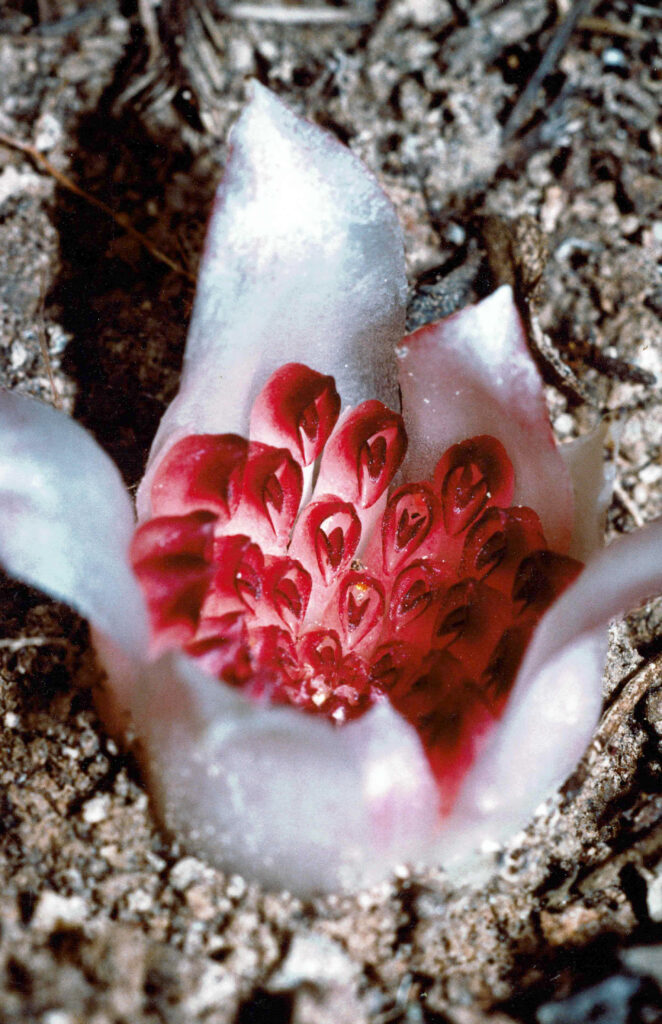October 20, 2022
Fun Fact: There is a genus of orchid in Western Australia that spends its entire lifecycle underground…including flowering.
Unsurprisingly, it’s really hard to find. The first species, Rhizanthella gardneri, wasn’t discovered until 1928 when a farmer ploughed his field and found the strange, fleshy, leafless plants (see below). As of 2020, there have been five species described, but they are considered to be critically endangered and their locations are kept secret.

Since they spend their whole lives underground and away from the sun, species of the genus rhizanthella (from the Greek: rhiza [root], and Anthos [flower]…root flower) have given up their ability to photosynthesise and instead rely on a complicated, multi-species relationships to survive. Rhizanthella species are mycotrophic (plants that get all or part of their carbon, water, or nutrients from fungi), but the fungus that it relies on also has a mycorrhizal relationship (fungi that have symbiotic relationships with plants) with the broom bush shrub, which it relies on for photosynthesized carbohydrates. The relationship is so critical that the seeds of the orchid will only germinate when infected by a fungus that is actively “mycorrhizing” with the broom bush.
When it flowers, the blooms typically stay several centimetres below the soil surface, with the very tips of the flowers poking through the surface only occasionally. We don’t know who pollinates it, how many there are, why they have bothered to keep their chloroplasts…
We’re completely in the dark on this one…researchers are practically buried in work… ok, no m-orchid-ding around…
